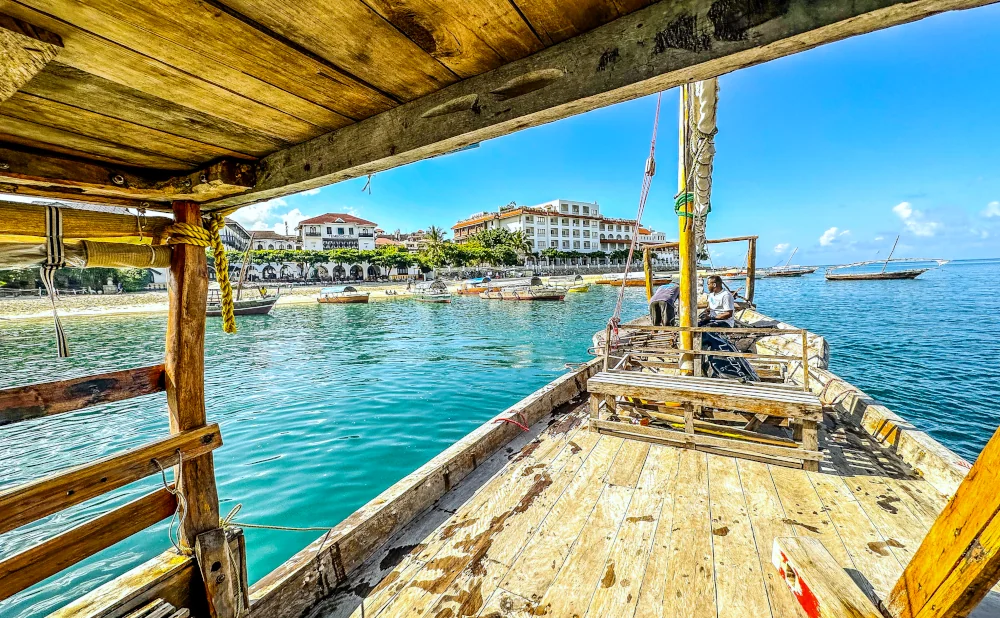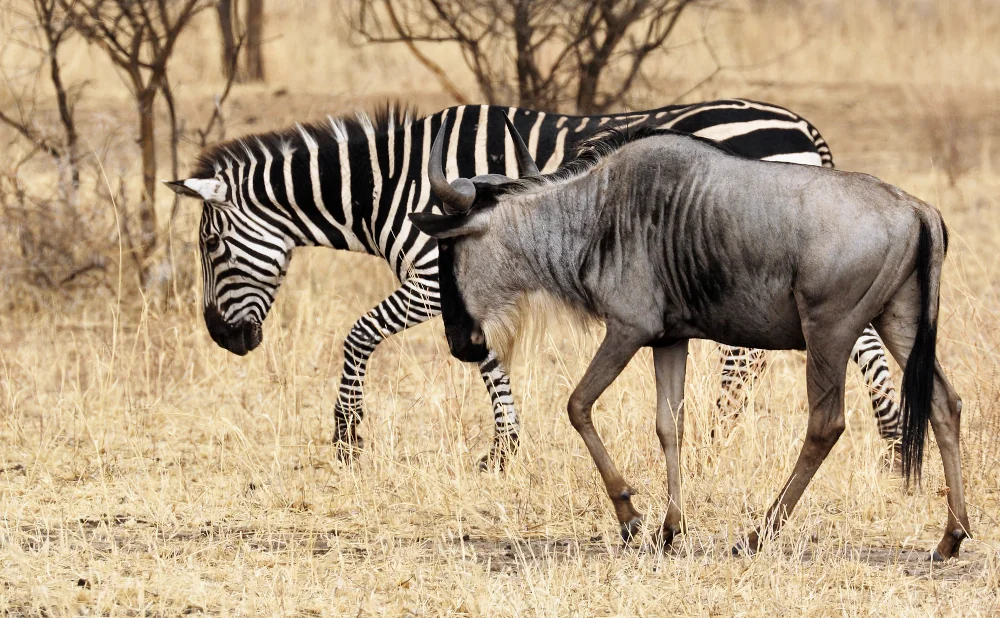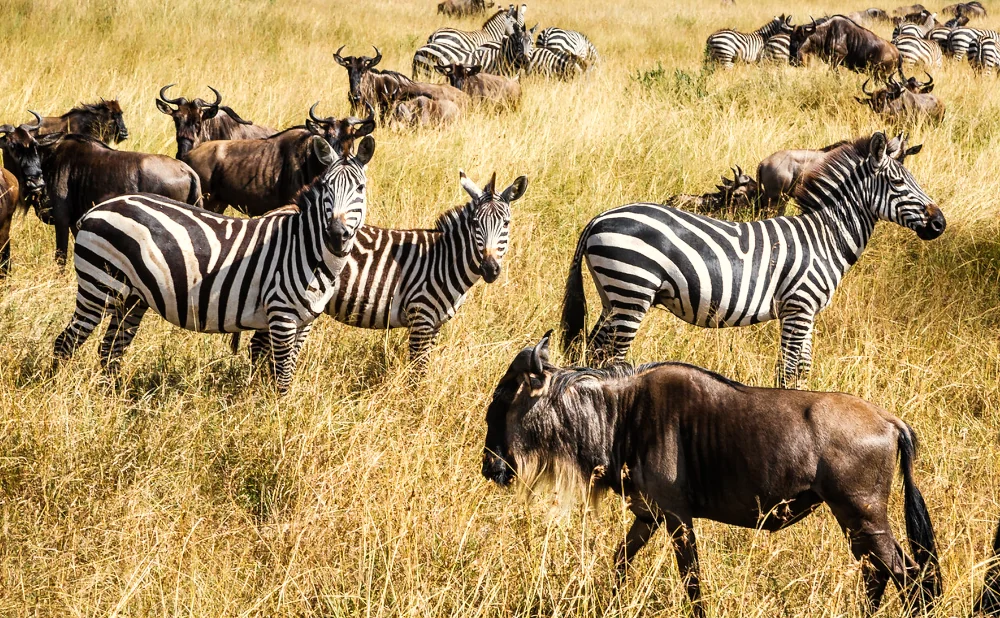Overview of Ethnic Groups in Tanzania
Tanzania is a vibrant and culturally rich country located in East Africa. Known for its stunning landscapes and diverse wildlife, Tanzania is also home to a multitude of ethnic groups, each with its own unique traditions and languages. This mosaic of cultures is woven into the fabric of Tanzanian society, making it a fascinating destination for those interested in exploring human diversity. In this article, we'll explore the major ethnic groups in Tanzania, delve into their cultural heritage, and examine how they contribute to the country's rich tapestry.
The Diversity of Tanzania's Ethnic Groups
Tanzania is home to over 120 different ethnic groups, making it one of the most culturally diverse countries in Africa. This diversity is a result of centuries of migration and settlement by various peoples from different parts of the continent. The intermingling of these groups over time has created a unique cultural landscape where traditions, languages, and customs coexist and influence each other.
The country's history of trade and migration has further enriched this diversity. Coastal interactions through the Indian Ocean trade routes brought influences from as far as the Arabian Peninsula and the Indian subcontinent. Inland, the movement of Bantu-speaking peoples and Nilotic groups has shaped the demographic map. This blend of historical interactions and migrations has endowed Tanzania with a cultural richness that is both complex and vibrant.
Major Ethnic Groups in Tanzania
Despite the large number of ethnic groups, several stand out due to their size and cultural influence. These groups often serve as cultural ambassadors, representing the rich heritage and traditions that Tanzania has to offer. Here are some of the major ethnic groups in Tanzania, whose cultural practices and histories are integral to understanding the nation's identity.
1. Sukuma
The Sukuma are the largest ethnic group in Tanzania, constituting about 16% of the population. They primarily reside in the northwestern part of the country, near Lake Victoria. The Sukuma people are known for their farming and cattle-keeping practices, which are central to their way of life. Their language, Kisukuma, is widely spoken in the region and serves as a vital element of their cultural identity.
The Sukuma have a rich tradition of oral storytelling and dance, which are integral to their community gatherings and ceremonies. Their traditional dances, such as the Bugobogobo and the Guda, are not only forms of entertainment but also a means of preserving their history and culture. These cultural expressions highlight the importance of music and dance in maintaining their ethnic identity and passing down traditions to future generations.
2. Chaga
The Chaga people are one of the wealthiest and most influential groups in Tanzania. They inhabit the slopes of Mount Kilimanjaro, Africa's highest peak. The Chaga are renowned for their agricultural skills, particularly in banana and coffee farming, which have made them economically influential. Their social organization is based on clan systems, and they speak the Kichaga language, which has several dialects reflecting their diverse subgroups.
Chaga society places a strong emphasis on education and entrepreneurship, contributing to their prominence in Tanzanian business and politics. Their unique irrigation systems and agricultural practices reflect their innovative spirit and adaptability. The Chaga's integration of modern and traditional methods exemplifies their ability to maintain cultural heritage while embracing progress.
3. Maasai
The Maasai are perhaps the most internationally recognized ethnic group in Tanzania due to their distinctive customs and dress. They are semi-nomadic people who live in the northern regions of Tanzania and Kenya. The Maasai are known for their cattle-herding lifestyle and their vibrant traditional attire, which includes brightly colored shukas and intricate beadwork. The Maa language, spoken by the Maasai, is part of the Nilotic language group and is a key component of their identity.
The Maasai's semi-nomadic lifestyle is adapted to the arid and semi-arid landscapes they inhabit, allowing them to thrive in challenging environments. Their deep connection to cattle, seen as symbols of wealth and social status, is central to their cultural and spiritual life. The Maasai's practices and beliefs are deeply intertwined with the natural world, emphasizing the importance of harmony with the environment.
4. Hehe
The Hehe people are found in the southern highlands of Tanzania. Known for their warrior history, the Hehe played a significant role in resisting German colonization in the late 19th century. Their resistance is a source of pride and an integral part of their historical narrative. Today, they are primarily farmers and speak the Kihehe language, which is a reflection of their rich cultural heritage.
The Hehe are noted for their strong communal bonds and agricultural practices that are well-suited to the highland climate. Their traditional governance systems and social structures continue to influence their societal organization. The Hehe's history and cultural practices contribute to the tapestry of Tanzanian identity, showcasing their resilience and adaptability.
5. Nyamwezi
The Nyamwezi are the second-largest ethnic group in Tanzania, residing mainly in the central-western regions. They are known for their agricultural activities and trade, which have historically made them influential in regional commerce. The Nyamwezi language, Kinyamwezi, is widely spoken among the community and is a testament to their cultural continuity.
Trade routes historically traversed by the Nyamwezi have fostered a spirit of entrepreneurship and adaptability. Their cultural expressions, including music and dance, often reflect the themes of travel and trade, underscoring their historical role as intermediaries in regional commerce. The Nyamwezi's blending of traditional and contemporary practices highlights the dynamic nature of Tanzanian cultural identities.
Cultural Heritage and Traditions
Each ethnic group in Tanzania has its own set of cultural practices and traditions that contribute to the nation's diverse cultural heritage. These traditions are expressed through music, dance, art, and ceremonies, serving as vital links to the past and as expressions of identity and community values.
Music and Dance
Music and dance are integral parts of Tanzanian culture. Each ethnic group has its own unique musical styles and traditional dances, which are often used to mark significant life events and to convey cultural stories and values. The Sukuma, for example, are famous for their traditional dances, such as the Bugobogobo and the Guda, which are performed at community gatherings and celebrations. The Maasai are known for their jumping dance, known as "Adumu," which is performed during important ceremonies and showcases their physical prowess and cultural vibrancy.
Music and dance serve as powerful tools for storytelling and preserving oral histories, ensuring that cultural knowledge is passed down through generations. They also provide a means for communities to come together, fostering social cohesion and cultural continuity. The diversity of musical and dance traditions across Tanzania reflects the rich cultural tapestry of the nation.
Traditional Art and Crafts
Traditional art and crafts are also significant aspects of Tanzanian culture. Many ethnic groups are skilled in creating intricate beadwork, pottery, and carvings, which serve as expressions of cultural identity and creativity. The Makonde people, for instance, are renowned for their ebony wood carvings, which depict both everyday life and spiritual themes, showcasing their artistic skill and cultural narratives.
Art and crafts are often imbued with symbolic meanings and are used in various cultural and spiritual contexts. They serve as tangible connections to the past, preserving traditional techniques and motifs that have been passed down through generations. These artistic expressions are not only important for cultural preservation but also contribute to the local economy through tourism and trade.
Ceremonies and Festivals
Ceremonies and festivals play a vital role in Tanzanian society, marking important life events and seasonal changes. These events are opportunities for communities to come together and celebrate their shared heritage and values. The Chaga people, for example, celebrate the "Unyago" ceremony, which is a rite of passage for young girls, marking their transition into womanhood. The Maasai hold the "Eunoto" ceremony, where young warriors transition to adulthood, highlighting the importance of social roles and community responsibilities.
These ceremonies are rich with symbolism and are often accompanied by music, dance, and traditional attire, creating vibrant and memorable experiences. They serve to reinforce cultural norms and values, ensuring that they are passed on to future generations. The diversity of ceremonies and festivals across Tanzania reflects the unique cultural identities of its many ethnic groups.
The Role of Language
Language is a key component of ethnic identity in Tanzania. While Swahili and English are the official languages, many ethnic groups speak their own indigenous languages, which are vital to their cultural heritage and identity. Swahili serves as a unifying language that facilitates communication among different ethnicities, promoting national unity and social cohesion.
The use of indigenous languages is crucial for the preservation of cultural knowledge and oral traditions. These languages carry the nuances of cultural expressions and are essential for maintaining the continuity of cultural practices. Efforts to document and revitalize indigenous languages are important for preserving Tanzania's linguistic diversity and cultural richness.
The Importance of Ethnic Diversity in Tourism
Tanzania's ethnic diversity is a major draw for tourists seeking authentic cultural experiences. Many tour operators, such as Golden Trips Tanzania, offer cultural tours that allow visitors to engage with local communities and learn about their traditions. These tours often include visits to Maasai villages, Chaga homes, and traditional Sukuma dance performances, providing unique insights into the country's cultural diversity.
Cultural tourism offers an opportunity for visitors to experience the richness of Tanzania's cultural heritage firsthand. It fosters cross-cultural understanding and appreciation, bridging gaps between different societies. By participating in cultural tours, tourists contribute to the local economy and support the preservation of cultural traditions.
Sustainable Tourism Practices
Promoting sustainable tourism practices is essential to preserving Tanzania's cultural heritage. By supporting local communities and respecting their traditions, tourists can contribute to the conservation of Tanzania's diverse ethnic cultures. Sustainable tourism initiatives focus on minimizing environmental impact and ensuring that tourism benefits local communities economically and socially.
Engaging with local artisans, purchasing traditional crafts, and participating in community-led tours are ways tourists can support sustainable practices. These efforts help ensure that tourism does not disrupt cultural practices but rather enhances them. Sustainable tourism not only preserves cultural heritage but also empowers communities to maintain and celebrate their unique identities.
Tanzania's ethnic diversity is a testament to the country's rich cultural heritage. From the Sukuma and Chaga to the Maasai and Hehe, each ethnic group contributes to the vibrant tapestry that makes Tanzania unique. Understanding and appreciating this diversity not only enriches our knowledge but also fosters respect and unity among different cultures. Whether you're a local or a visitor, exploring the ethnic groups of Tanzania offers a glimpse into the heart of this extraordinary nation. By embracing and celebrating this diversity, we can contribute to a more inclusive and harmonious global community.











